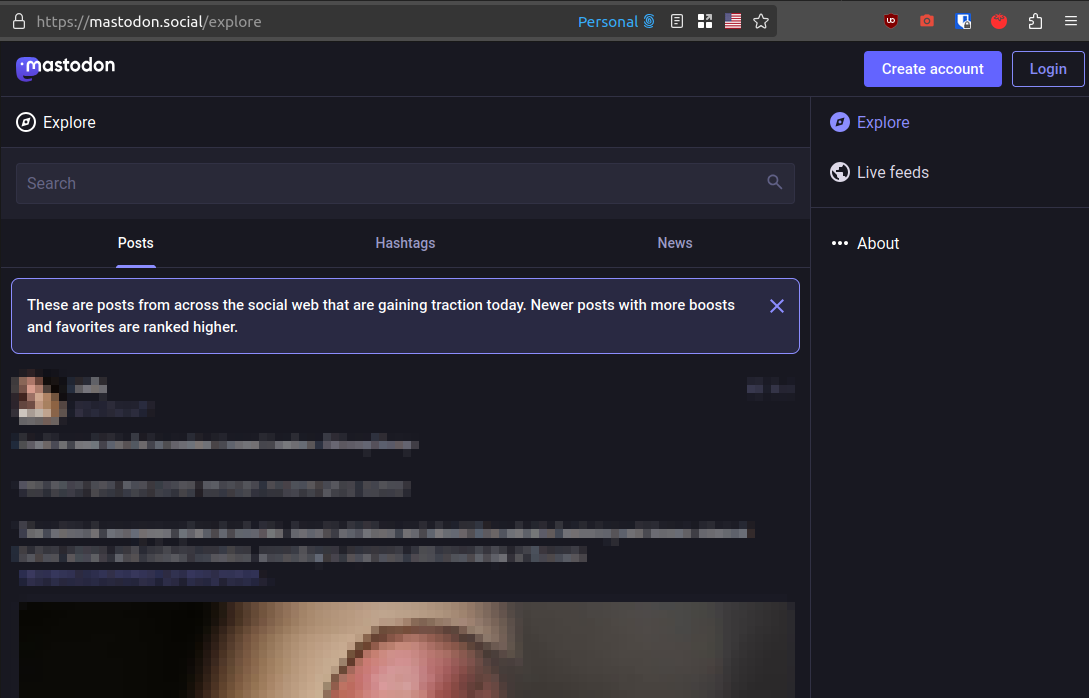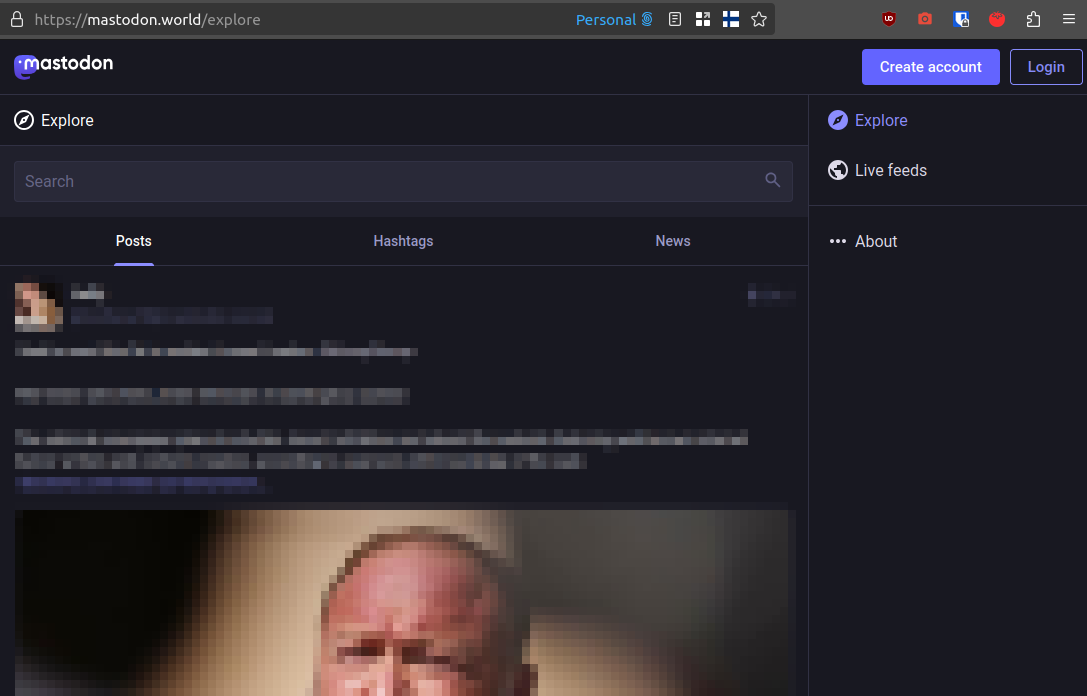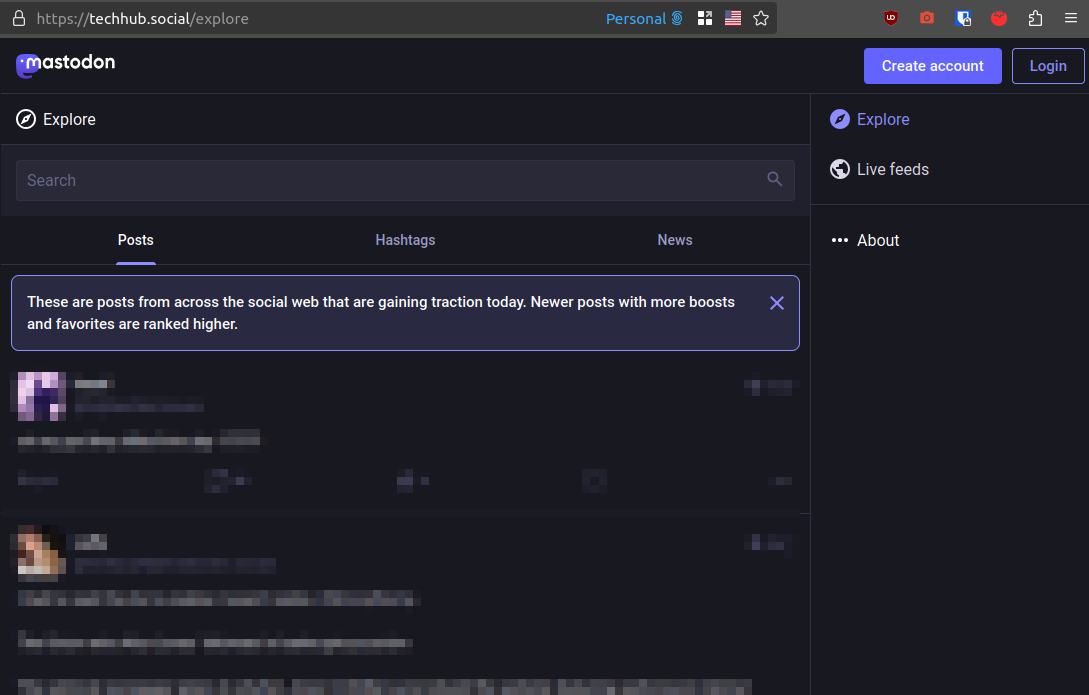

BlueSky isn’t decentralised yet. Right now the only thing that is decentralized is data storage. You can’t set up an independent federated instance yet. They promise they will add that feature, but it hasn’t happened yet.


BlueSky isn’t decentralised yet. Right now the only thing that is decentralized is data storage. You can’t set up an independent federated instance yet. They promise they will add that feature, but it hasn’t happened yet.


a .world or .sh.itjust.works - is too much for a handful of amateur admins to handle. Hand off the instance to a venture capital firm and you could see rapid enshitification.
Lemmy is federalized. It is expected that many .worlders would just jump ship to another instance. And I don’t see how the venture capital firm could stop them… For as long as one organization doesn’t control 60%+ of all user’s instances we should be unshitifiable. It is possible for enshitification to happen… but it is of a greater difficulty, because the other non-shit instances still exist and they are federated, thus able to access the same content.
They could try and pull up the drawbridge and de-federate from every other instance that isn’t under the control of the firm so that the content of the venture capital instances are exclusive, but for as long as they don’t control 60%+ of all user’s instances we are good.
It is not to hard to imagine that, if .world where to be sold like that, half or more would jump ship. At least that’s what I hope.
the focus should be on figuring out how to explain it to people in a sensible way.
And that is the thing I have been struggling with and if the major instances looked visually distinct it would make it easier to not confuse them. But yeah, the fediverse has a marketing problem. We need to get people with marketing skills involved.
For example, I don’t use Gmail and I run my own personal Mastodon instance using masto.host, this doesn’t stop me communicating with people on Gmail or major Mastodon instances like mastodon.social.
I mentioned Gmail because, when a single instances holds something like 95% of the users, that gives them a lot of power. If Gmail decided to de-federate from you… you are kinda screwed. That’s my concern. Although, as you said, that is still better than a fully centralized platform.
Sorry for the long, poorly organized response. I just had a bunch of thoughts on this that I wanted to get of my head
The thing I have noticed is that the fediverse does not have an elevator pitch. It is really hard to explain things in simple terms.
Usually, when just simply trying to make an account, people expect to simply go to a website, create account and done, you are in.
While in the fediverse it is like:
And the user is like:
And them they get lectured for 10+ minutes over some tech concepts that look alien to them.
And now they will have to receive another 10+ minute long lecture on the flaws of the centralized social media.
20+ minutes worth of lecture, just so they can use a social media platform. If they hear they whole lecture, and understand it, they will probably give the fediverse a try, but if they don’t because they got overwhelmed with information from your lectures they won’t even try.
And all of this and I still haven’t explained a single feature of the platform itself.
We need to come up with an elevator pitch that gives people some clue of what federation is.
I know what some might be thinking: “Why do they need to know what federation is?” Well yes, I could just say, go to [big Mastodon instance here] and create an account. Cool, they are using Mastodon.
But inevitably, this will happen: Someone will send them a link to a Mastodon post. They click it, but the link they were send was on another instance as such they are logged out. Thing is, they don’t know what federation is and most instances have nearly indistinguishably UI, as thus the user doesn’t notice they are on a completely different site. “Strange”, they think, “I could have sworn I was logged in”. Then they try to log in on the other instance… can’t and get confused and maybe even panic. “Did I just lose my account?”. And now they come to me for tech support (because I was the one who introduced them to mastodon), and I end up having to explain federation anyways.
Now, with that being said, Email is still an example of a federated platform with mass adoption, and we should use it as an example when explaining the fediverse. But I would like to stress the following point: most instances have nearly indistinguishably UI, as thus the user doesn’t notice they are on a completely different site. Go different Email instances and they look distinct. Go to gmail.com and outlook.com and they look distinct enough so that people can intuitively understand that, although they are both email services, their Gmail account is not going to let them log into Outlook.
Mastodon instances on the other hand? They just brand themselves as “Mastodon” and that’s about it. They look identical! Just LOOK:



No wonder people get confused. The big instances NEED to look distinct for this to work. Otherwise, the federation thing will be confusing.
Now that I’m writing this I’m realizing that this seems to be an UI problem: The instances look to similar to be immediately recognizable as distinct and that’s confusing. Therefore we should work towards ensuring that instance, or at least the big ones, have a distinct appearance, their own “brand”, so they can be seen as distinct so that the example scenario I showed earlier doesn’t happen.
Or maybe I’m over-complicating things… Maybe it’s as easy as: “It kinda works like email. On email, you can go to a number of different sites, like gmail and outlook and send mail to anyone. Mastodon is also like that, there are many websites, each one with their own rules and mod teams. You can join any of them and see post from people from the other sites.”
But even this explanation has a problem: It does not explain de-federation. If they end up trying to follow someone who is on an instance their main instance as de-federated, they won’t be able to find them and they won’t know why. Most are not familiar with email de-federation as most only ever need to interact with the big instances which all federate with each other.
I guess my problem is that, by simplifying things so that non-tech people can understand, they will end up running into the intricacies of federation and not know what to do.
Also, if people don’t understand federation, we will end up with a Gmail situation: Everybody is on the same one instance. Understanding the need for this separation of Mastodon into different instances can be hard. If we simply tell people to go to the big instance, that’s what they will do. And then we end up with Gmail.
Federation and separation into smaller communities is a good thing, but it can hard to explain how and why.
I should have been more clear. I meant “The federalized nature of Mastodon seems to be its biggest obstacle to it achieving mass adoption”.
The post was about why Mastodon isn’t receiving as many user as BlueSky, or in other words, why it isn’t achieving mass adoption. It was under this context that I chose to use the word “flaw”, as in, flaw towards reaching mass adoption.
perhaps the federated nature of Mastodon could be its greatest strength as well.
I should have been more clear. I meant “The federalized nature of Mastodon seems to be its biggest obstacle to it achieving mass adoption”.
The post was about why Mastodon isn’t receiving as many user as BlueSky, or in other words, why it isn’t achieving mass adoption. It was under this context that I chose to use the word “flaw”, as in, flaw towards reaching mass adoption.
One of the reasons why I like Mastodon is precisely because I want to interact with more of a niche community on a federated platform.
I agree. Mastodon being niche isn’t necessarily a bad thing.
basically immediately sold out to crypto people.
Wait what? I know very little about BlueSky and even less about the people behind it, so I didn’t know that. Could you send me a link to more info?
Wait, Trump is doing what? Can you link some sources?